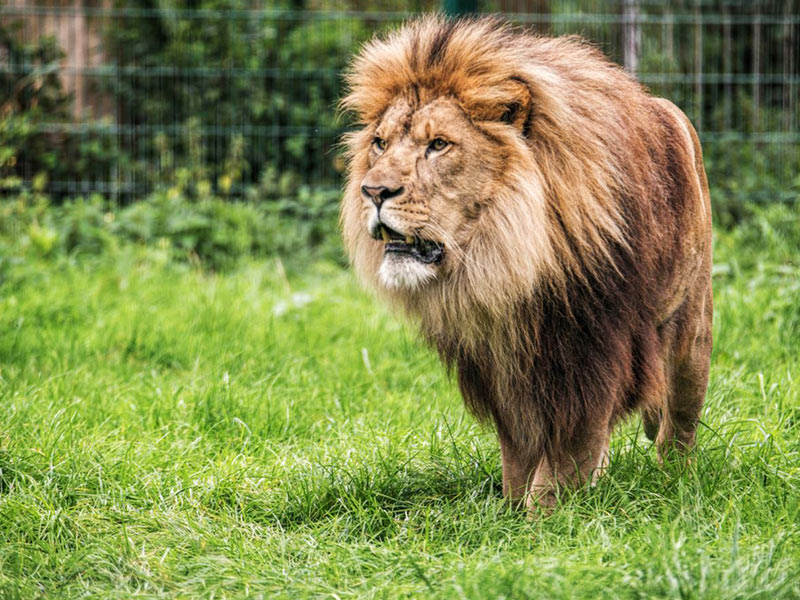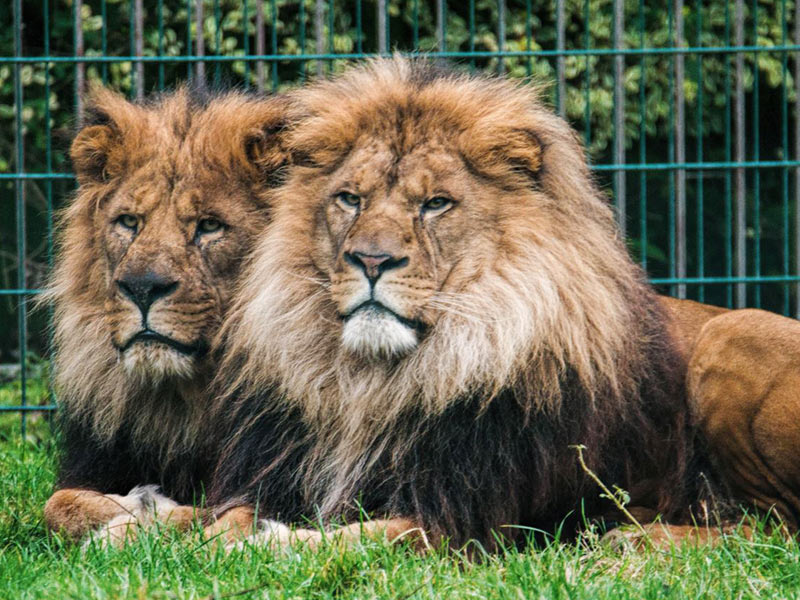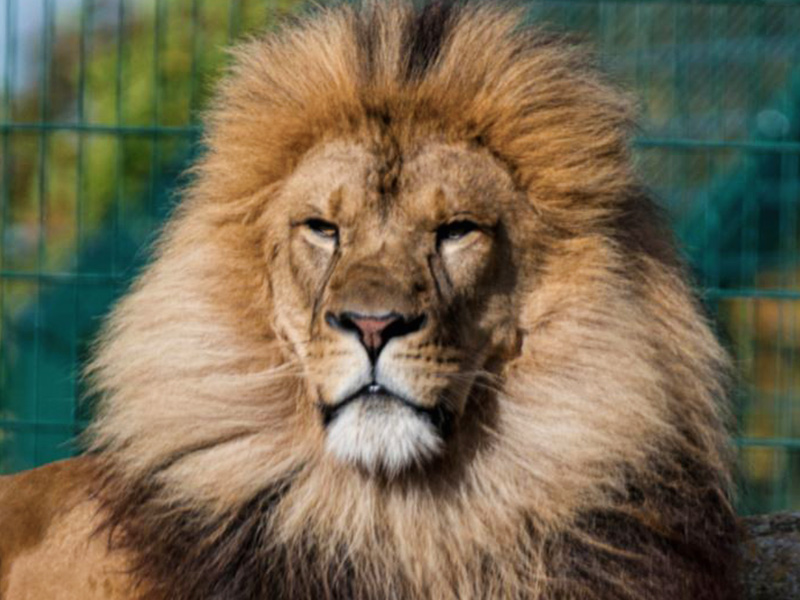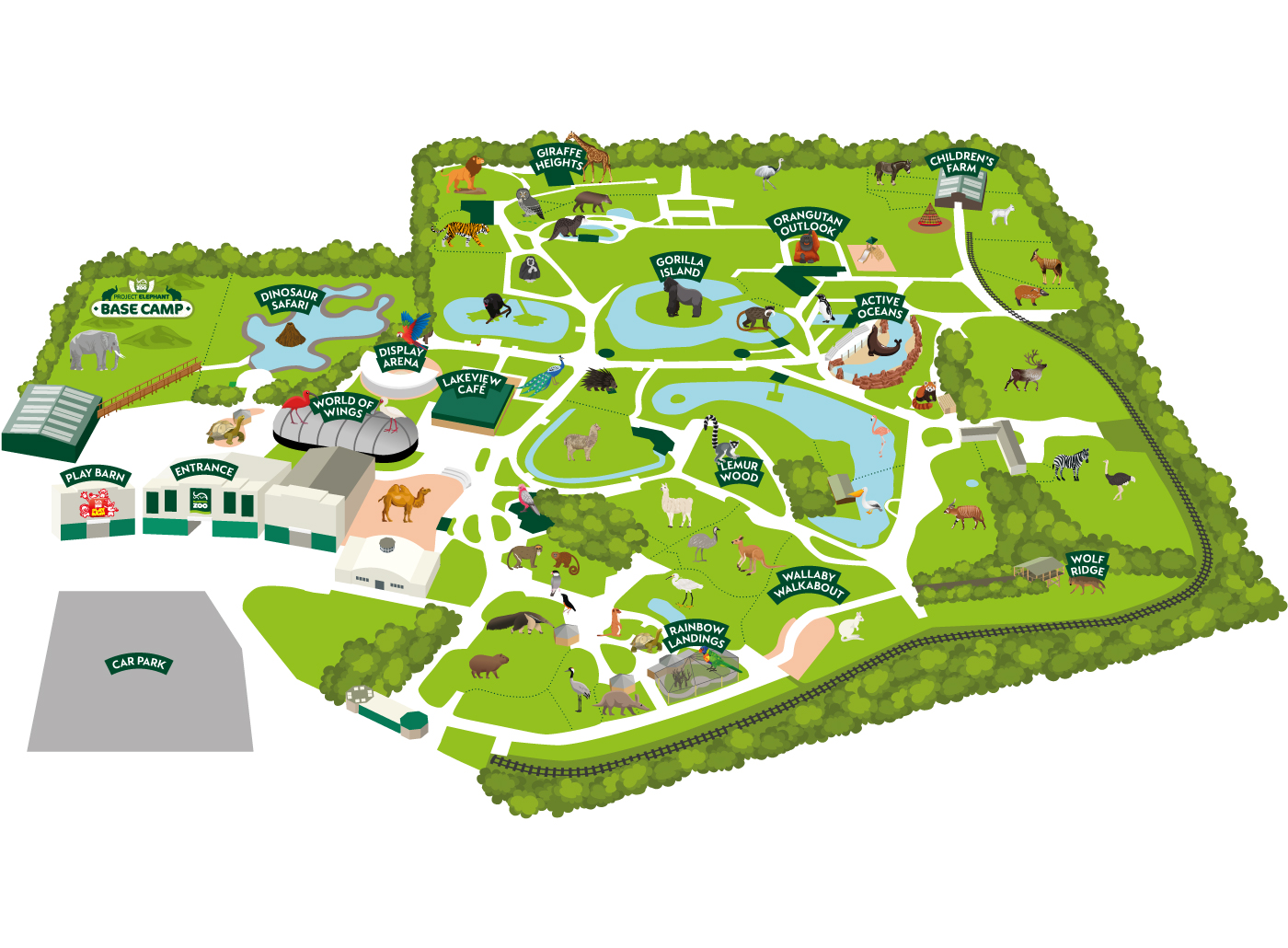We have 3 African lions, Khari a male born at the zoo in May 2015 and 2 lionesses, Hira and Narla, who came from West Midland Safari Park to make Big Cat Habitat their home in May 2023.
The new state-of-the-art Big Cat Habitat, has increased indoor space and a larger off-show management area will be complimented by extended external paddocks and improved keeper facilities, which will enable the best possible care for the magnificent animals. It officially opened on Friday 26th May 2023.
Lions are the only cats that live in groups, which are called prides. Prides are family units that may include up to three males, a dozen or so females, and their young. All of a pride's lionesses are related, and female cubs typically stay with the group as they age. Young males eventually leave and establish their own prides by taking over a group headed by another male.
Get unbelievably close to these awesome predators with only a pane of glass between you - you can almost smell the lions’ breath! These magnificent cats live between 10 and 14 years in the wild . Adult male lions are instantly recognisable by the thick growth of hair on the neck, the mane, and the thicker and darker the mane, the more attractive the lion becomes to the females as this is a sign of good health. Lions usually hunt after dark as they have excellent night vision.
Several large and well-managed protected areas in Africa host large lion populations. Where an infrastructure for wildlife tourism has been developed, cash revenue for park management and local communities is a strong incentive for lion conservation. The only real threats to lions in the wild come from human poaching and disease.









